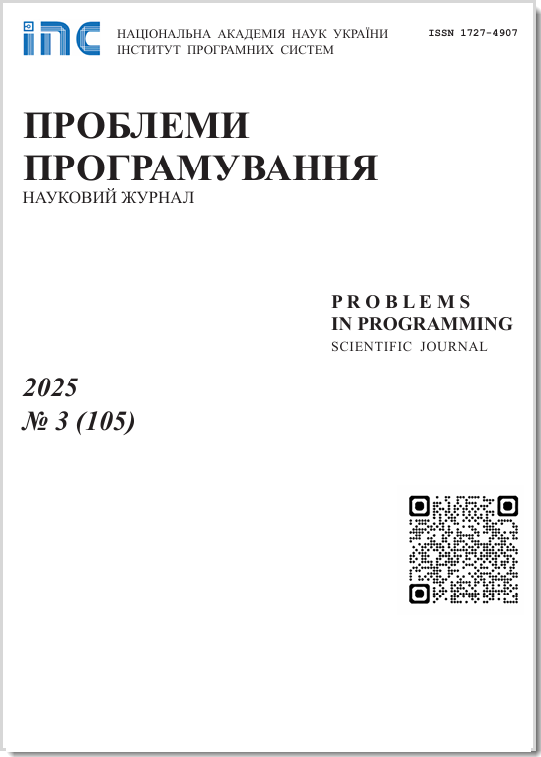On the problem of object recognition on devices with limited resources
Abstract
The problem of implementing object recognition on microcontrollers with limited resources, particularly the challenges related to their computational power, memory capacity, and energy consumption is addressesed. The use of the compact MobileNet neural network architecture is proposed, which is based on an algorithm with reduced computational load and ensures sufficient performance in resource-constrained environments. This approach enables image classification tasks to be performed on low-cost microcontrollers. Although the technologies discussed are well-known individually, their comprehensive application for specific classification tasks on microcontrollers, such as object recognition, remains underexplored. The article provides a detailed description of all development stages, including data preparation, model parameter tuning, and the use of specialized image scaling methods to reduce computational load. The practical part of the article is devoted to developing a strawberry recognition system to determine their ripeness level using the ESP32 microcontroller. The research results demonstrate the effectiveness of the approach for different applied tasks and confirm the feasibility of integrating computer vision technologies into resource-limited devices. Overall, the work proves that modern machine learning technologies are becoming accessible even to the least powerful hardware platforms, expanding their capabilities and areas of application..
Problems in programming 2024; 4: 14-22
Keywords
Full Text:
PDF (Українська)References
Ashiq, F.; Asif, M.; Bin Ahmad, M.; Zafar, S.; Masood, K.; Mahmood, T.; Mahmood, M.T.; Lee, I.H. CNN-Based Object Recognition and Tracking System to Assist Visually Impaired People: IEEE Access, 2022. 14819-14821 с. CrossRef
ESP32-CAM: Technical Specification. https://docs.sunfounder.com/projects/galaxy-rvr/en/latest/hardware/cpn_esp_32_cam.html
What are the pros and cons of AI (compared to traditional computing). https://www.ibm.com/think/insights/artificial-intelligence-advantages-disadvantages
Wei Fang, Lin Wang, Peiming Ren. Tinier-YOLO: A Real-Time Object Detection Method for Constrained Environments: IEEE Access, 2019. 1935-1938 с. CrossRef
Yahui Nan, Jianguo Ju, Qingyi Hua, Haoming Zhang, Bo Wang: A-MobileNet: An approach of facial expression recognition: Alexandria Engineering Journal, 2021. 4435-4437 с. CrossRef
SqueezeNet: The Key to Unlocking the Potential of Edge Computing. https://medium.com/sfu-cspmp/squeezenet-the-key-to-unlocking-the-potential-of-edge-computing-c8b224d839ba
Howard A. G., Zhu M., Chen B. et al. Mobilenets: efficient convolutional neural networks for mobile vision application: Cornell University, 2017. 1-5 c.
Wei Wang, Yutao Li, Ting Zou, Xin Wang, Jieyu You, Yanhong Luo: A Novel Image Classification Approach via Dense-MobileNet Models: Hindawi, 2020 3с. CrossRef
MobileNetV2. https://paperswithcode.com/method/mobilenetv2
EDGE IMPULSE. https://edgeimpulse.com/about
FOMO: Object detection for constrained devices. https://docs.edgeimpulse.com/docs/edge-impulse-studio/learning-blocks/object-detection/fomo-object-detection-for-constrained-devices
Скотаренко А.О. Система автоматичного збору полуниць: бакалаврська робота: Київ, 2024. 40-52 с.
f1_score. https://scikit-learn.org/1.5/modules/generated/sklearn.metrics.f1_score.html
Arduino IDE. https://www.arduino.cc/en/software
DOI: https://doi.org/10.15407/pp2024.04.014
Refbacks
- There are currently no refbacks.









